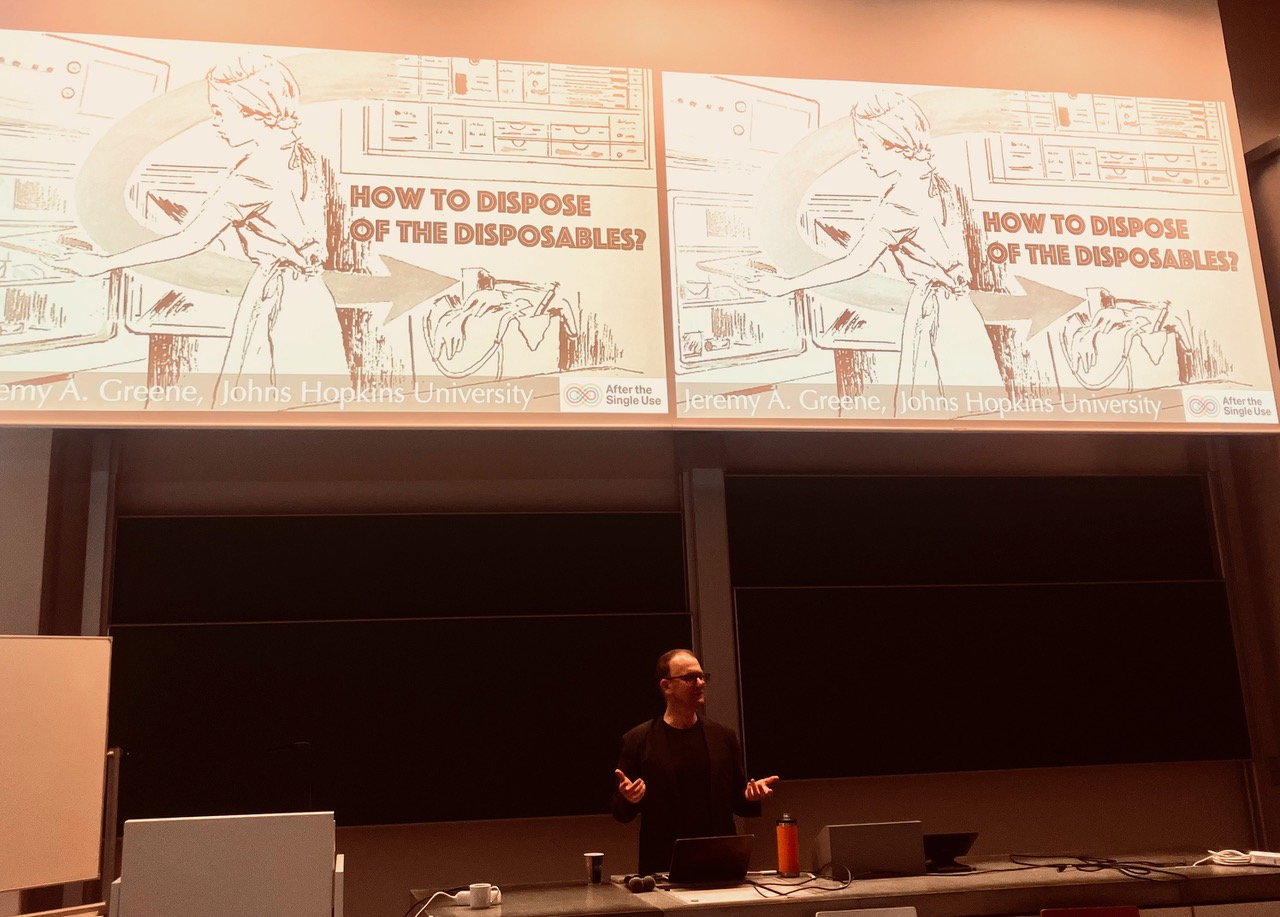How to dispose of the disposables? Single-use plastics and the making of medical waste

Body
Jeremy Greene took part in our project panel - Pasts, Presents, and Futures of Plastics in Medicine - at the 2025 European Association for the History of Medicine and Health (EAHMH) conference in Berlin.
Summary of Jeremy's paper:
In August 1962, a hospital manager wrote to the advice column of Hospital Management with an embarrassing problem. “We are having a great deal of difficulty in disposing of our disposable syringes and needles,” he complained, and it was beginning to have human costs. Specifically, if just thrown away, “we find that garbage and refuse contractors are taking these items out of the trash barrels and are using them for other purposes.” Such episodes delineated a double edge to plastic temporality. Single-use plastics were things both ephemeral and eternal; objects whose use-function were conceived for the short term, but which nonetheless managed to stick around as a troublesome material for a long time afterwards. “Disposing of disposables,” the president of the American Hospital Association complained in 1967, “is a new, and surprising, problem.” Before the “disposable revolution”, one mid-size hospital might purchase about 2,000 reusable syringes per year. But just a few years after the shift, it burned through 500,000 annually. Disposables created new qualitative as well as quantitative problems of disposal. This was especially true in the case of contaminated plastic syringes, which were at least doubly toxic: first in the sense of the potentially infectious organic materials they contained after being used, and second as a source of new synthetic petrochemical toxins as they decayed in landfill or were burned in incinerators designed for other materials. In retrospect, many of the hidden costs of single-use plastics were already quite visible across American hospitals by the mid-1960s, even if that reckoning would later be ignored. Using archival collections, FOIA requests, and trade journals, this talk revisits the calculus of the individual and collective burden of disposing of medical waste at the dawn of the era of throwaway medicine.
Read the panel summary here and find out more in this blogpost.
